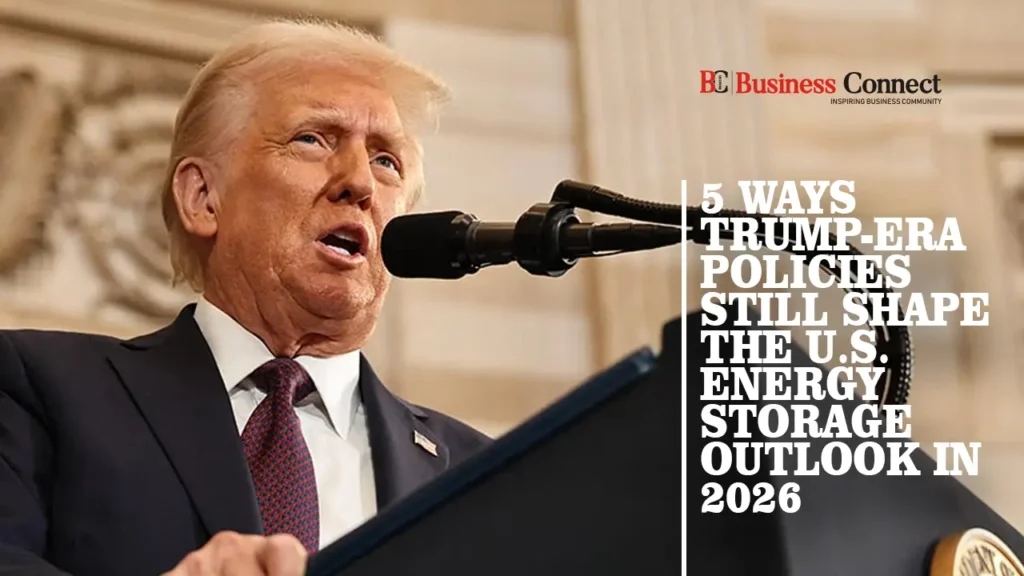5 Ways Trump-Era Policies Still Shape the U.S. Energy Storage Outlook in 2026
As the U.S. energy landscape evolves in 2026, many of the trends shaping its direction can be traced back to policies from former President Donald Trump’s administration. From deregulation to trade reforms, these measures reshaped how energy storage integrates with the national grid — influencing both fossil fuel and renewable energy sectors.
Understanding how these policies continue to influence investment patterns, infrastructure development, and technology adoption offers crucial insights into the future of U.S. energy storage.
1. Deregulation and Energy Infrastructure
Federal Deregulation Policies
The Trump administration’s push for deregulation was designed to reduce federal oversight and fast-track approvals for pipelines, refineries, and storage facilities. This policy shift accelerated the deployment of large-scale energy storage projects — particularly those linked to fossil fuel power plants.
By simplifying compliance requirements, the government created a friendlier environment for private investors, many of whom entered the energy storage market expecting lower bureaucratic hurdles.
Impact on Grid Modernization
These deregulation efforts indirectly benefited grid modernization initiatives. Utilities were encouraged to integrate energy storage systems alongside new transmission projects. However, critics argue that the policy disproportionately favored fossil fuel storage infrastructure, slowing the pace of renewable integration across several states.
2. Incentives for Fossil Fuel Industries
Tax Breaks and Subsidies
Trump’s energy strategy provided generous tax incentives and subsidies for coal, natural gas, and oil sectors. These measures lowered operational costs for fossil fuel companies and improved the financial viability of associated storage facilities — including battery-backed gas peaker plants that support grid stability.
Impact on Market Competitiveness
While these incentives strengthened fossil fuel-backed storage, they made it harder for renewable storage developers — such as lithium-ion battery producers — to compete. This led to a market where fossil and renewable energy storage coexisted, sometimes uneasily, as traditional energy sectors retained a strong lobbying advantage.
3. Trade Policies and Domestic Manufacturing
Tariffs on Battery Materials and Imports
Trump-era tariffs on imported solar panels, lithium, and battery materials initially strained energy storage companies reliant on global supply chains. Yet, these trade restrictions ultimately spurred domestic manufacturing, encouraging the U.S. to build its own resilient battery production ecosystem.
Supply Chain Transformation
Though short-term costs rose, the long-term result was a stronger domestic supply chain. By 2026, the U.S. battery industry has expanded significantly, reducing reliance on imports and strengthening national energy security — one of the original goals of Trump’s “America First” energy vision.
4. Energy Independence and Strategic Storage
Grid Resilience Through Domestic Resources
Energy independence was a cornerstone of Trump’s agenda. His policies promoted developing energy storage systems that could ensure continuous power from domestically sourced oil, coal, and natural gas. This approach bolstered grid resilience and allowed utilities to better manage peak demand and mitigate blackout risks.
Impact on Renewable Energy Growth
However, this emphasis on fossil fuel-based energy sometimes diverted attention and funding from renewable projects. States with their own clean energy mandates continued advancing renewable storage, but at the federal level, progress slowed. The result is a hybrid system — where both fossil fuel and renewable energy storage coexist within a strategically diversified grid.
5. Long-Term Policy Ripple Effects
Investor Confidence and Market Growth
Trump’s clear policy direction created predictability for investors. Even as new administrations introduced contrasting policies, the foundation of deregulation and market freedom continued to guide investor sentiment. This stability helped long-term planning for energy infrastructure projects, including storage systems.
Technological Innovation and Private R&D
While federal funding for renewable energy storage remained limited, the push for domestic energy innovation indirectly boosted private-sector research. Companies developed hybrid technologies — blending gas turbines with battery storage — to meet both economic and regulatory goals.
FAQs: Trump Policies and the U.S. Energy Storage Market
| Question | Answer |
|---|---|
| How did Trump policies affect renewable energy storage? | They slowed some renewable projects but strengthened domestic battery manufacturing. |
| Did deregulation boost storage growth? | Yes, by simplifying permits and reducing compliance barriers. |
| Are domestic battery producers benefiting from tariffs? | Yes, U.S. production capacity has increased significantly. |
| Did tax incentives favor fossil fuel storage? | Yes, most benefits went to oil, gas, and coal-backed facilities. |
| Did energy independence policies slow renewable adoption? | Partially, though state-level initiatives continued renewable expansion. |
| Will these policy effects last beyond 2026? | Yes, many market patterns and regulatory frameworks remain in place. |
Balancing Policy Legacy with Market Innovation
The Trump era left a complex yet enduring mark on America’s energy storage sector. Deregulation, fossil fuel incentives, and protectionist trade policies reshaped how storage systems are financed, built, and integrated. While renewables faced headwinds, domestic manufacturing and grid investments thrived.
As the U.S. continues its energy transition in 2026, understanding these policy legacies remains essential for investors, policymakers, and innovators navigating the nation’s evolving energy storage ecosystem.



